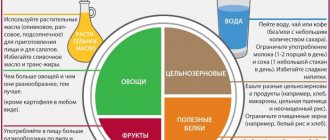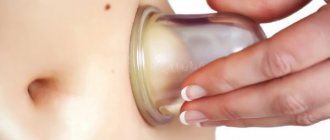Chlorine is essential for maintaining health; without it, many biochemical processes would be impossible. However, this substance can bring not only benefits, but also harm. After all, as a gas it is poisonous, and its excessive presence in water or food can cause poisoning.
Properties of chlorine
Chlorine is a reactive non-metal belonging to the halogen group. Included in the periodic table under atomic number 17. Under normal conditions, it is a gas with a suffocating odor and a yellow-green tint. It is poisonous, 3 times heavier than air.
The properties of chlorine are that due to its high chemical activity, it reacts with almost all elements in the table. Therefore, the substance is practically never found in its pure form. In nature, it can only be found in the composition of minerals: sylvite, bischofite, halite, sylvite, carnalitte, etc. When exposed to alkalis and water, it reacts by transitioning to hypochlorous and hydrochloric acid.
In 1772, the substance was first obtained by Joseph Priestley as a result of an experiment. However, not in its pure form, but as a compound with hydrogen. And after 2 years the substance was obtained in its pure form. To conduct the experiment, Swedish chemist Karl Wilhelm Scheele used manganese dioxide and hydrogen chloride.
However, due to its pronounced odor, the substance was long classified as one of the forms of hydrochloric acid. The chemist G. Davy in 1811 managed to prove the fallacy of this judgment. During the experiment, he managed to decompose table salt into two components: sodium and chlorine. He also proposed a name for the new substance - chlorin. It is translated from Greek as “green,” which alludes to the natural color of the gas. And a year later, J. Gay-Lussac reduced it to “chlorine”.
The role of chlorine in the human body
The human body contains up to 100 mg of chlorine. Moreover, the main part is located in the epithelium, muscle tissue and blood. The remaining 40% is distributed between internal organs, bone tissue, and extracellular fluid.
When chloride enters the human body with food and water, it undergoes dissociation. And the substance, divided into ions, participates in many metabolic processes. For example, its presence allows carbon dioxide to be removed from the body. Since chloride is one of the participants in the process of its release.
This substance delivers fluid and nutrients inside the cell. With the help of chlorine, some ions cross the cell membrane. It affects muscle tissue as it is an electrolyte. Due to constant physical activity, the body loses chloride, which can cause cramps.
Chlorine, combining with potassium and sodium, provides the necessary pressure in the blood, lymph and intracellular fluid. Controls the process of redistribution of fluid and salts in tissues. Provides regulation of osmotic pressure.
The macronutrient starts the process of digestion of complex carbohydrates by activating amylase. Another digestive enzyme, pepsin, is involved in the breakdown of protein. Its activation is also due to chlorine, since the process occurs only under the influence of hydrochloric acid. And it is produced only in the presence of a macroelement.
Chlorine is one of the components that regulate the acid-base balance. Its displacement can provoke the appearance of various diseases. Since biochemical processes are disrupted, internal organs stop working in the desired mode.
The macroelement allows the circulatory system to function correctly and supervises the condition and functioning of red blood cells. Chlorine is also involved in the breakdown of fats, preventing them from accumulating inside the liver and other tissues. It has a pronounced bactericidal property, so if there are problems with the gastrointestinal tract, an increase in the daily norm is prescribed.
What are the dangers of a lack and excess of chlorine?
Scientists conducted tests on laboratory animals, the results of which showed what the lack of chlorine in the body leads to. As a rule, this phenomenon is observed if a person receives this macroelement in insufficient quantities from food, as well as when chlorine metabolism is disrupted. Its deficiency often affects children who are bottle-fed.
Chlorine deficiency manifests itself:
- anorexia;
- constipation;
- loss of hair and teeth;
- swelling;
- high blood pressure.
Just like a lack of chlorine, its excess in the body is fraught with negative toxic effects, since this macroelement is toxic in itself, like its compounds. Thus, excess chlorine mainly manifests itself as growth inhibition.
The benefits of chlorine
The benefits of chlorine are as follows:
- prevents dehydration;
- eliminates swelling;
- rids the body of waste and toxins;
- affects joint flexibility;
- awakens appetite;
- allows the body to absorb food;
- normalizes blood pressure;
- improves the functioning of the liver and cardiovascular system.
Harm of chlorine
However, exceeding the permissible norm of chlorine can cause harm and cause the development of a number of diseases.
Moreover, the pathologies caused are usually of a severe type, difficult to treat:
- pneumonia;
- liver and kidney cancer;
- asthma;
- lungs' cancer.
If the gas enters the atmosphere or water in excess, it can cause an increase in the level of acidity in the stomach. And this already leads to the development of ulcers, gastritis and other gastrointestinal diseases. Oversaturation of the air with vapors of the substance can cause a burn to the lungs, since when it gets inside the body it is transformed into hydrochloric acid.
Lack of chlorine
Hypochloremia is an insufficient level of chlorine in the blood. This condition is rare, as it usually occurs in excess. After all, chloride is part of table salt. And it is present in almost all products and prepared dishes.
However, the following factors can cause hypochloremia:
- prolonged fasting;
- hyperhidrosis;
- Cushing's syndrome;
- use of laxatives and diuretics;
- salt-free diet;
- kidney diseases;
- food poisoning causing vomiting and diarrhea;
- burns affecting a large area of skin;
- heart failure that has progressed to the chronic stage;
- artificial feeding;
- Addison's disease;
- stomach ulcer;
- skull injury affecting the hypothalamus.
A lack of chlorine is indicated by:
- convulsions;
- hair loss;
- crumbling teeth;
- drowsiness;
- swelling;
- lack of appetite;
- increased body temperature;
- exhaustion;
- depression;
- varicose veins;
- lack of coordination;
- dry skin;
- nausea;
- decrease in blood pressure.
Chlorine
Chlorine (Cl–) is a constant component of plant and animal tissues, present mainly in the form of an ion due to the dissociation of sodium, potassium, calcium, magnesium, etc. salts. Chlorine is the main anion of the extracellular fluid, its concentration in the cell is 3-4 mmol/l, in the intercellular fluid (including in blood plasma) about 100 mmol/l. Chlorine plays an important role in maintaining the core, osmotic balance of blood plasma, lymph, CSF and some tissues, water balance in the body, and is a component of gastric juice. Chlorine ions, along with sodium and potassium, form the membrane potential of cells and activate a number of enzymes. With the loss of chlorides, alkalosis develops; with excess consumption, acidosis develops.
Chlorine ions enter the body with food in the form of sodium chloride and, to a lesser extent, potassium chloride. A regular diet covers the daily requirement of an adult for chlorine. Bread, meat and dairy products are especially rich in chlorine. Absorption of Cl– occurs predominantly in the small intestine, but some of the ions are secreted in the stomach along with hydrogen ions and are reabsorbed in subsequent sections of the gastrointestinal tract. Chlorine is excreted from the body mainly through urine (90%) and sweat (6%). The chlorine content in the body depends on the balance of chlorine intake from food; distribution in tissues and body fluids and excretion in urine.
Manifestations of hypo- and hyperchloremia do not have pronounced specificity. Disorders of chlorine metabolism are secondary to disturbances in the metabolism of sodium, hydrogen, and bicarbonates. A decrease in chlorine causes muscle weakness and muscle twitching, characteristic of sodium metabolism disorders; a sharp decrease in chlorine content in the body can lead to a serious condition, even death. With hyperchloremia, agitation, rapid heartbeat, increased blood pressure, swelling, difficulty breathing, and in severe cases, coma are observed. A general picture of the balance of chlorine in the body can be obtained through a comprehensive examination with determination of the level of chlorides in the blood and urine.
An increase in the chlorine content in the blood occurs when the body is dehydrated, as well as when the excretory function of the kidneys is impaired. The level of chlorine in urine depends mainly on its content in food.
A decrease in the level of chlorine in the blood occurs with excessive sweating, vomiting, respiratory and metabolic acidosis, the use of diuretics, and the appearance of edema. A decrease in chlorine content in the blood is caused by kidney diseases, during which the ability of the tubules to reabsorb is impaired, chronic and acute renal failure, and uncontrolled use of diuretics.
Hypochloremia is caused by a state of acidosis of various origins, accompanied by the transition of chlorine ions from the blood to the tissues. A decrease in the concentration of chlorine in the blood is noted with hyperaldosteronism.
An increase in the level of chlorine in the blood occurs with dehydration, impaired renal excretory function, diabetes insipidus, respiratory alkalosis, and adrenal insufficiency.
Hyperchloremia is divided into absolute, which develops when the excretory function of the kidneys is impaired, and relative, associated with dehydration and blood thickening. The development of relative hyperchloremia is caused by insufficient intake of water into the body, diarrhea, vomiting, loss of fluids and salts from burns.
Hyperchloremia can occur with heart failure, the development of edema, the release of chlorine from tissues caused by various reasons, including alkalosis, as well as with the resorption of edema, exudates and transudates. Ingestion of large amounts of sodium chloride from food can lead to hyperchloremia.
Indications for the study
- Kidney disease;
- diabetes insipidus;
- pathology of the adrenal glands;
- monitoring of CORR disorders.
Features of sample collection and storage:
blood serum without signs of hemolysis. Blood is taken with minimal compression of the vein without muscle load.
Research method:
Determination of the concentration of chloride ions in the blood is currently carried out mainly by the ion-selective method.
Reference interval:
98–107 mmol/l
Increased values
- Excess intake of chlorides from food;
- dehydration;
- prolonged diarrhea associated with metabolic acidosis and loss of sodium bicarbonate;
- kidney diseases (nephrosis, nephritis, nephrosclerosis);
- heart failure;
- endocrine diseases (primary hyperparathyroidism, hyperfunction of the adrenal cortex, diabetes insipidus) treatment with steroids;
- respiratory alkalosis.
Reduced values
- Lack of chloride intake from food;
- extrarenal loss of chlorine (excessive sweating, diarrhea, vomiting);
- kidney diseases with tubular damage;
Daily chloride excretion reflects the function of the kidneys and adrenal glands involved in maintaining water and electrolyte balance. Increased excretion of Cl– in the urine (hyperchloruria) is observed with adrenal insufficiency, depletion of sodium reserves, and chronic nephritis; decreased excretion (hypochloruria) – with the development of edema, fasting, vomiting, increased sweating.
In pathological conditions, hypochloruria is a consequence of the release of increased amounts of chlorine through sweat, vomit, and diarrhea. Hypochloruria, as a rule, accompanies hypochloremia with diarrhea and vomiting of various etiologies, in febrile conditions. The causes of hypochloruria are also called chlorine retention in the body; they distinguish between “dry” chlorine retention (transition of chlorine into tissues) and “wet” (transition of chlorine into extracellular fluid), which is observed in pneumonia, which accompanies cardiovascular failure with the development of edema, inflammatory effusions , formation of edema in kidney diseases, etc.
Indications for the study
- Pathology of the kidneys and adrenal glands;
- control of diuretic treatment.
Research method:
Determination of the concentration of chlorine ions in urine is currently carried out mainly by the ion-selective method.
Reference interval:
110–250 mmol/day
Increased values
- Increased consumption of table salt;
- hyperchloremia of various origins;
- increased diuresis of any origin;
- kidney diseases with tubular damage;
- resorption of edema, exudates and transudates;
- adrenal insufficiency;
- recovery period for infectious diseases;
- depletion of potassium reserves.
Reduced values
- Insufficient consumption of table salt;
- extrarenal loss of chlorides (with sweat, vomit, feces);
- edema of various etiologies (cardiovascular failure, kidney disease);
- hyperfunction of the adrenal cortex and pituitary gland.
Excess chlorine in the body
Hyperchloremia is an oversaturation of the body with chlorine. The condition is most dangerous for patients diagnosed with epilepsy or with other central nervous system diseases. As a rule, excess chlorine in the body is diagnosed in workers in the chemical, textile, pulp and paper, and pharmaceutical industries.
However, hyperchloremia can develop for other reasons. For example, swimming in water enriched with chlorine, or taking a hot shower. After all, large concentrations of the substance penetrate through the mucous membranes and skin. Frequent consumption of foods containing salt can also cause a pathological condition. Do not use water treated with chlorine for drinking or other household needs.
Factors leading to the development of hyperchloremia:
- renal failure;
- diabetes;
- inflammation affecting the intestinal mucosa;
- chemotherapy;
- ulcers of the stomach and duodenum;
- hormonal imbalance;
- long-term use of diuretics, corticosteroids, hydrocortisone.
The following symptoms will indicate excess chlorine:
- heartburn;
- sore throat;
- severe dry cough;
- swelling;
- gastrointestinal disorder;
- chest pain;
- pain in the eyes;
- headache;
- flatulence.
The effect of chlorine on the human body
Chlorine, like most minerals, macro- and microelements, as well as vitamins necessary for the functioning of human systems and organs, is absorbed in the intestines.
The main function of chlorine in the human body is to maintain water-salt balance. This becomes possible due to the fact that more than 90% of this substance comes into the body in the form of table (table, table) salt - a flavoring additive to food.
Daily norm
The daily intake of the substance varies and depends on the age of the person. For an adult, 2300 mg is considered the maximum amount, and for children, the chlorine rate varies from 300 mg for infants to 2300 for teenagers.
A more detailed dosage of the macronutrient is given in the table:
| Category | Chlorine requirement, grams |
| Children 0-6 months | 0,18 |
| Children 7-12 months | 0,57 |
| Children 12-36 months | 1,5 |
| Children 4-8 years old | 1,9 |
| Children 9-12 years old | 2,2 |
| Teenagers and adults of both sexes | 2,3 |
| Elderly people | 2,0 |
| People over 73 years old | 1,8 |
Pregnant and lactating women should not increase the rate of this element unless recommended by a doctor. Athletes and people employed in production with difficult working conditions, especially where the air temperature is elevated, are recommended to increase their chlorine consumption. © https://ydoo.info/micro/hlor.htmlBut again, this should be agreed upon with the attending physician.
Symptoms and causes of deficiency
Symptoms indicating a lack of chlorine in the body are:
- exhaustion and anorexia;
- muscle weakness;
- loss of appetite;
- loss of strength and depression;
- malfunctions of the kidneys and excretory system;
- aging and dry skin;
- phlebeurysm;
- high body temperature for no apparent reason;
- hair loss and thinning of nail plates;
- increased intracranial pressure;
- impaired coordination and instability of the vestibular apparatus;
- disruptions in the gastrointestinal tract and constipation;
- nausea and dizziness;
- dry mouth and tooth loss.
The reasons for the lack of such a macroelement as chlorine in the human body are not only improper and unbalanced nutrition, but also:
- salt-free diets;
- artificial feeding;
- use of diuretics or laxatives.
Children who do not receive breast milk are especially sensitive to chlorine deficiency. To avoid this, you should carefully consider the recommendations of nutritionists and child nutrition specialists. Adults should not resort to self-medication and prescribe medications for themselves by analogy with someone else.
Excess
Excess chlorine, as well as its deficiency, have an adverse effect on the human body. Excess of this macroelement in the diet of people suffering from epilepsy and other disorders of the central nervous system is especially dangerous.
Frequent symptoms that there is an excess of chlorine in the body are:
- annoying dry cough;
- heartburn and sore throat;
- diarrhea;
- swelling of the body, bags under the eyes;
- headaches and pain in the eyes;
- decreased immunity;
- lacrimation;
- bloating and flatulence, accompanied by severe pain.
You can oversaturate your body with chlorine not only by consuming foods that contain it. This is because chlorine in high concentrations is absorbed by mucous membranes and skin.
Under normal conditions, it is impossible to be poisoned by this substance, but if you drink water saturated with it during the process of technical disinfection of water pipelines, you can get not only all the above symptoms, but also pulmonary edema. Chlorinated water should also not be used for washing clothes and other household needs.
At risk of saturating the body with pure chlorine vapor are workers whose work activities involve the use of this substance.
Daily chlorine rate
The recommended volume varies depending on age and area of activity. The maximum daily chlorine intake for an adult is considered to be 2300 mg, but if necessary it can be increased. Large doses will be required for athletes and people engaged in physical labor.
Those living or working in conditions of high temperature and humidity should also adjust their diet upward. For gastrointestinal diseases, the daily norm should be above 2300 mg. It is necessary to ensure that the indicator does not fall below 800 mg. This amount allows you to maintain ionic balance.
The following standards have been established for children and adolescents:
- infants:
up to three months - 300 mg, by one year the figure must be increased to 600 mg; - children:
up to 2 years of age should receive 800 mg, by 7 years of age the volume should be increased to 1100 mg; - schoolchildren:
should receive from food no less than 1600 and no more than 1900 mg.
Chlorine in food
Virtually all food products contain chlorine from 2 to 160 mg%. Meat products, dairy products, and bread are especially rich in macronutrients.
Chlorine in products
power supply:
- table salt;
- olives;
- kelp, etc.
Chlorine is absorbed mainly in the large intestine.
Chlorine rate
c not established, no developed recommendations, determined empirically - 1.5 - 2g, satisfied by consuming an average amount of salt (up to 90%). The usual diet contains 7 - 10 g - an excessive amount: approximately 4 g in bread, 1.5 - 4 in table salt.









